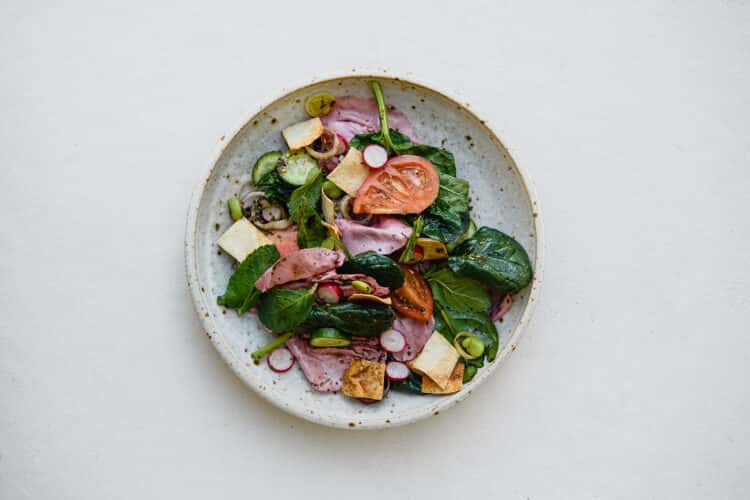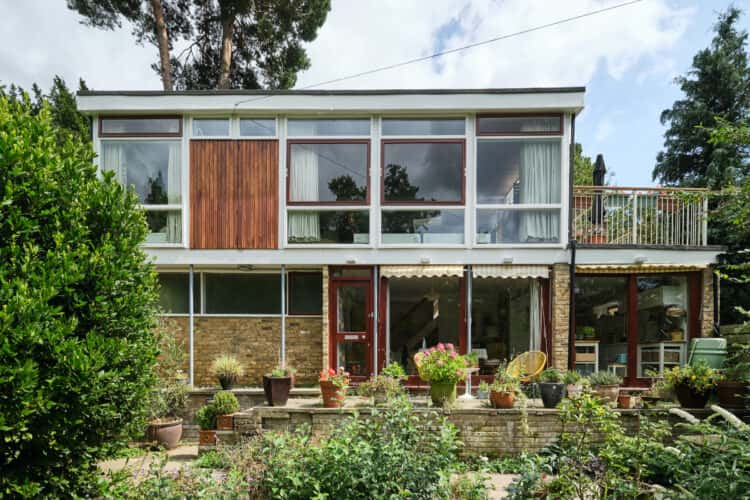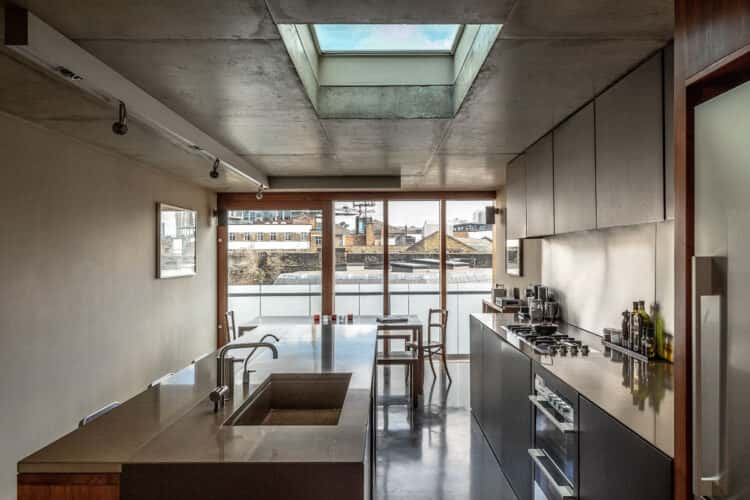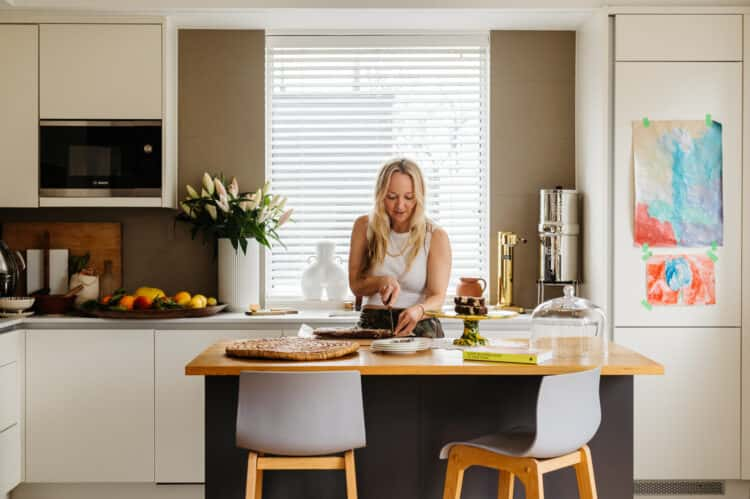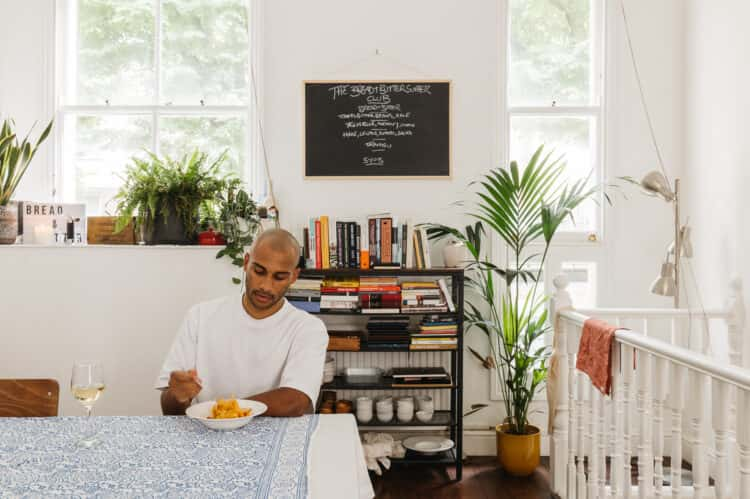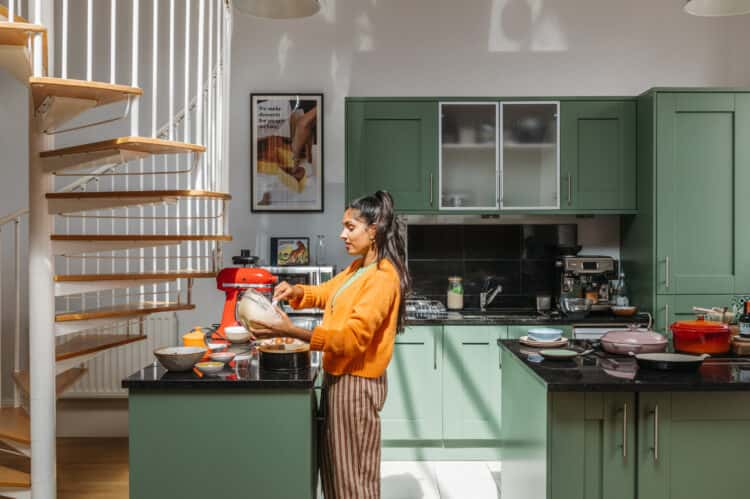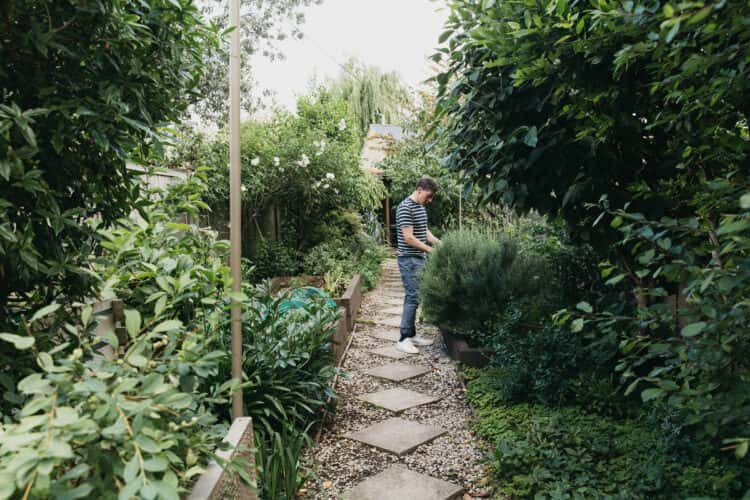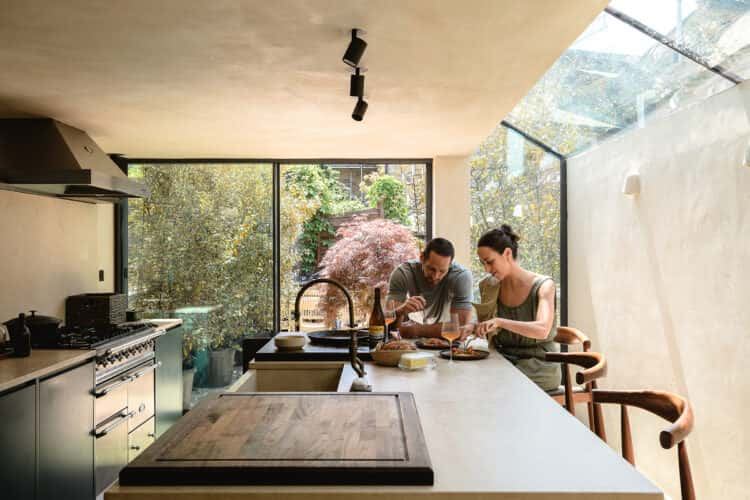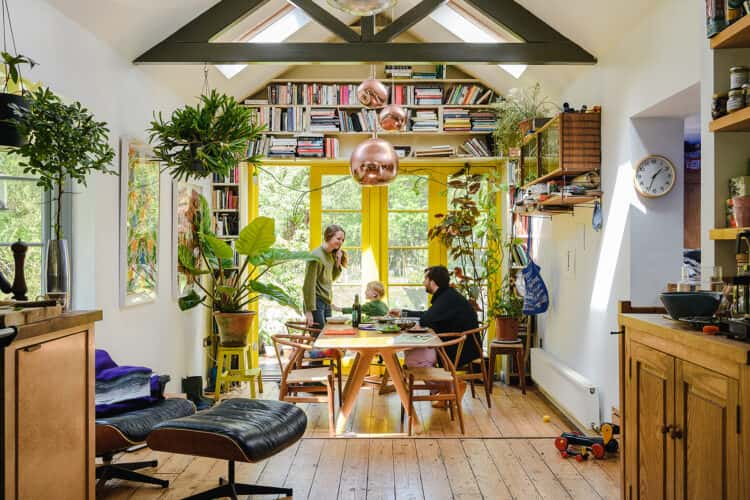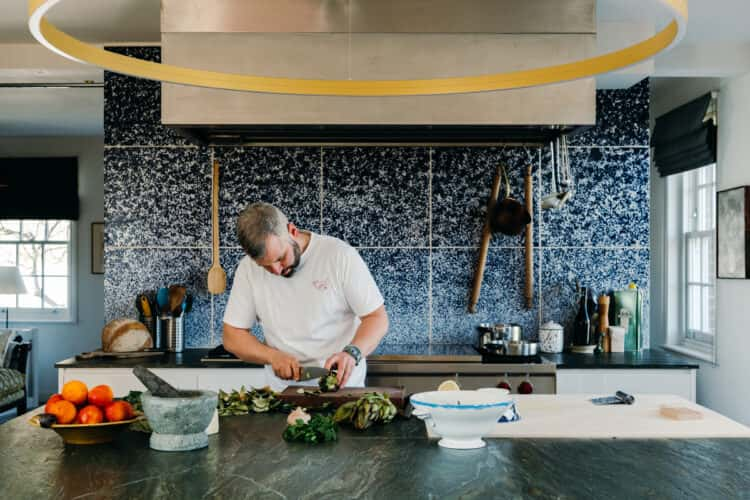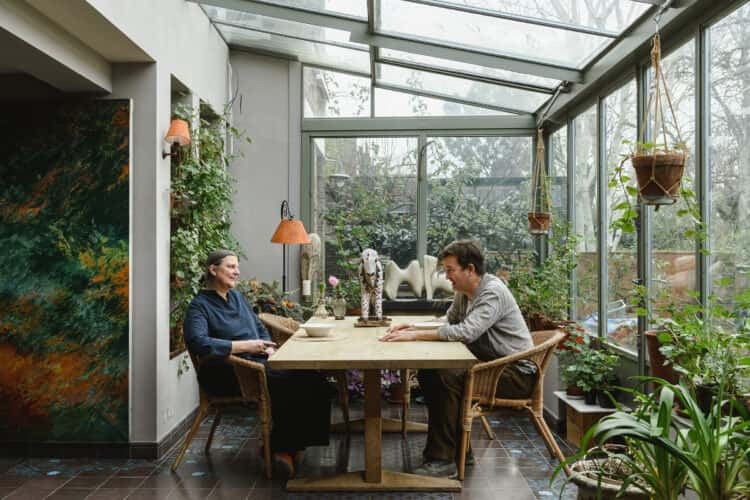Safia Shakarchi, founder of Another Pantry, on the joy of Middle Eastern cooking at her family home, plus a recipe for spring fattoush
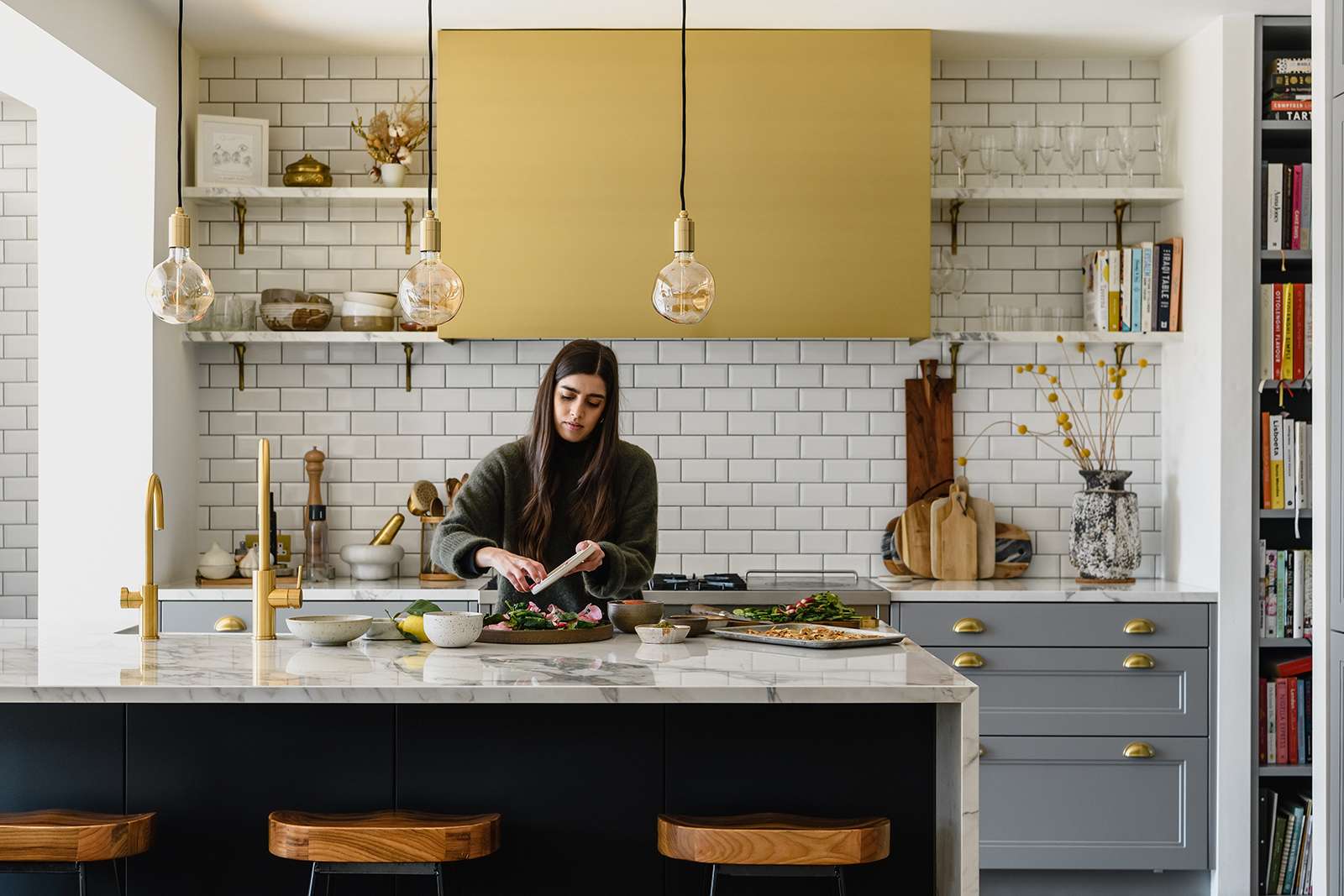
The site itself, which launched this spring, has the feeling of an online magazine. It’s a beautifully produced reflection of the slow, conscious food Safia champions. She releases seasonal recipes just four times a year, including both old favourites and new concoctions from the likes of Osip’s Merlin Labron-Johnson, pastry chef Ravneet Gill, and Honey & Co’s Sarit Packer and Itamar Srulovich. Here, at Safia’s family home, we gather round the kitchen island as she speaks infectiously about her love of quality ingredients and her Middle Eastern roots, while sharing her recipe for spring fattoush.
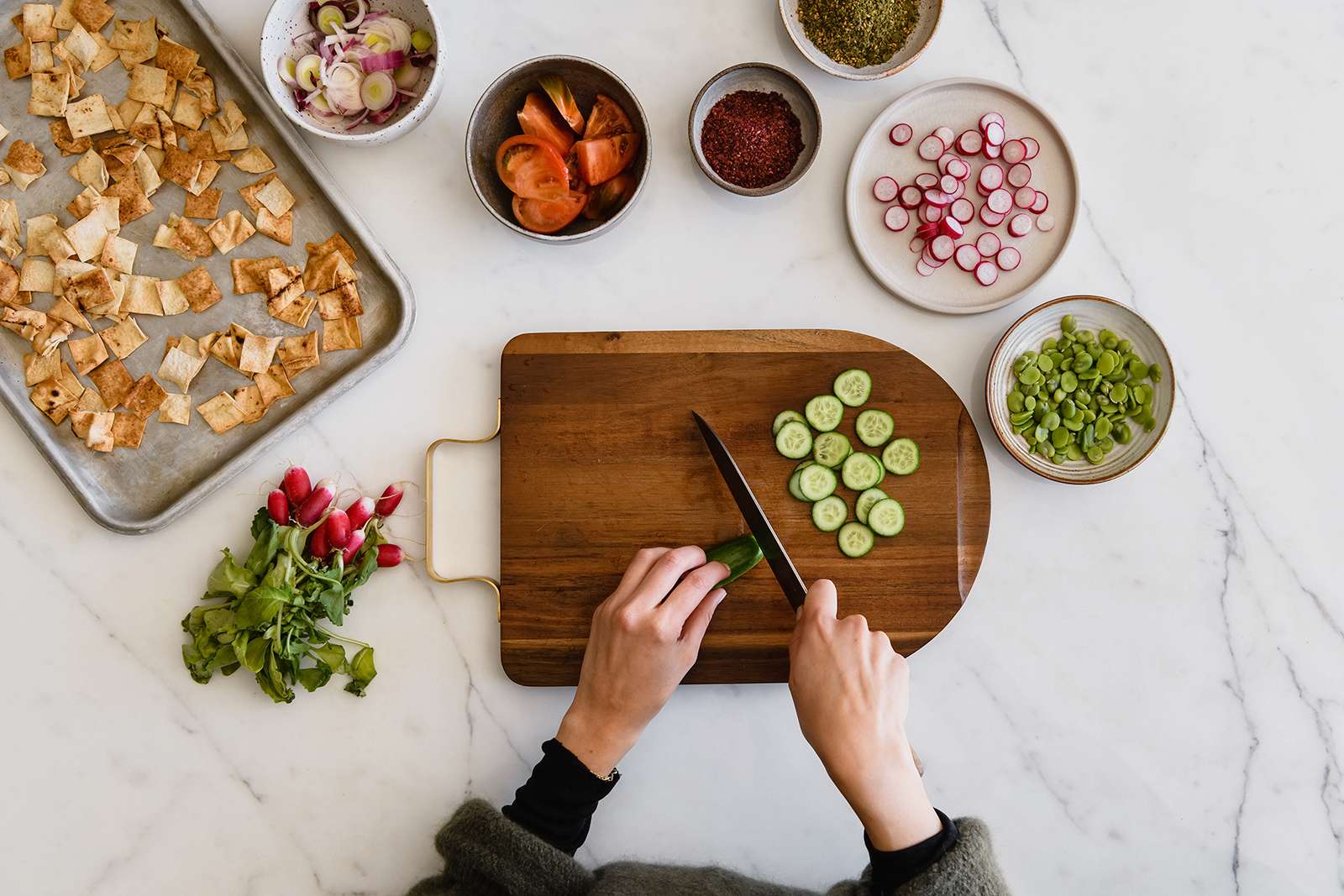
Safia: “The kitchen is designed with family and entertaining in mind. It has recently been renovated – and it happened at a time when my parents could finally afford their dream kitchen. I contributed to the design and the first thing we thought about was the island; we have a big family and love having people over for dinner.
“Since our old kitchen was very narrow and separate from the living space, we wanted to create something that people could gather round. The new kitchen island feels like a massive dining table. We also wanted the space to be really bright and open, somewhere you’d want to spend your day. Then there’s the pantry: my mum and I had always wanted one, so we decided to create our own here.
“Funnily enough, there is a link between the kitchen and my business, beyond the fact I often use it as a location for food shoots. My parents are from Iraq; they fled the country and moved here in 1982. They didn’t have anything when they arrived, so my dad started working for a few different companies until he finally found a profession he enjoyed. He built his current business himself. I have always admired him for that and felt that I wanted to do the same one day. I feel like this kitchen represents everything that my parents have worked towards, so I wanted the word ‘pantry’ to be involved in my business. Mine is the second family enterprise – or ‘another’ one – hence the name.
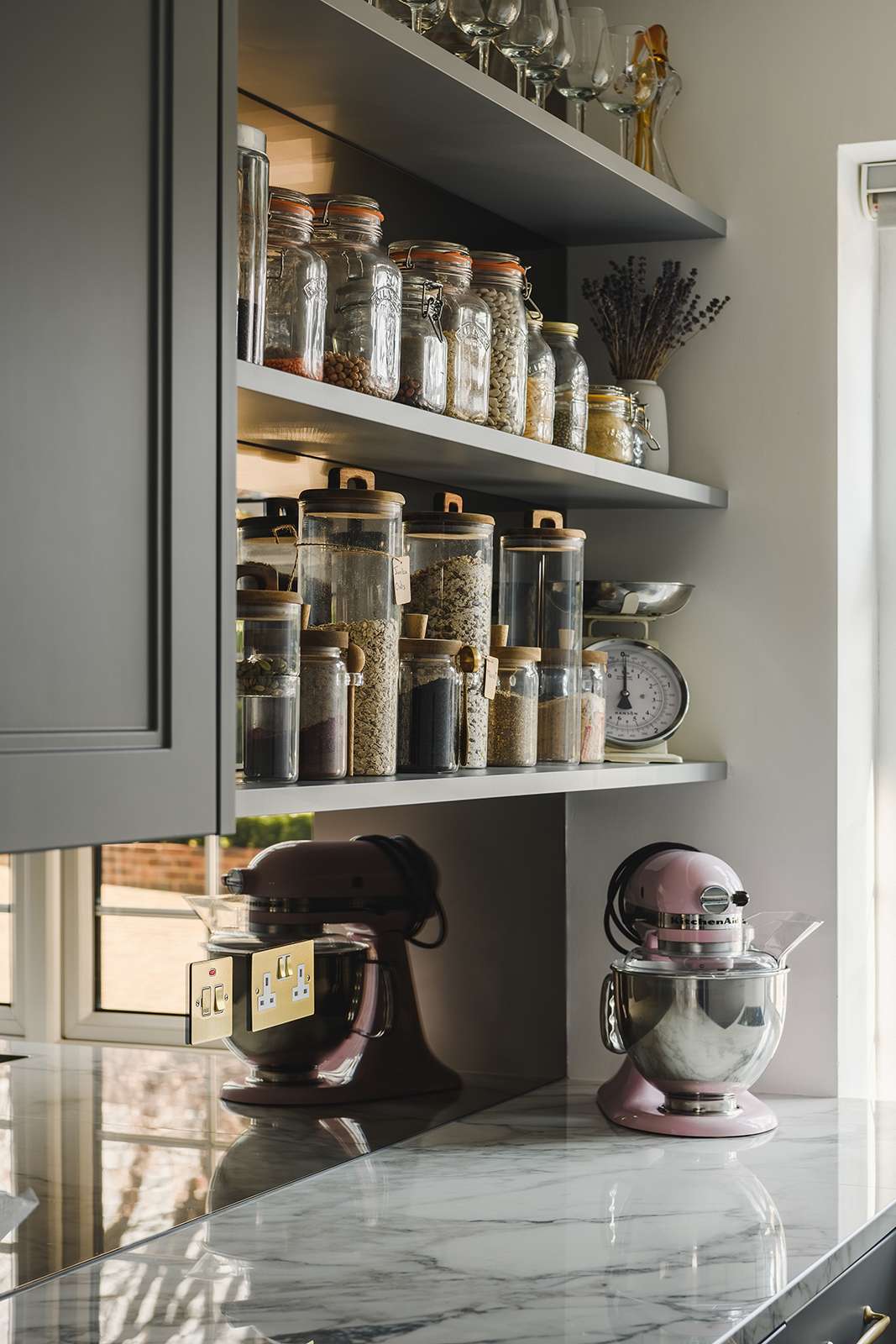
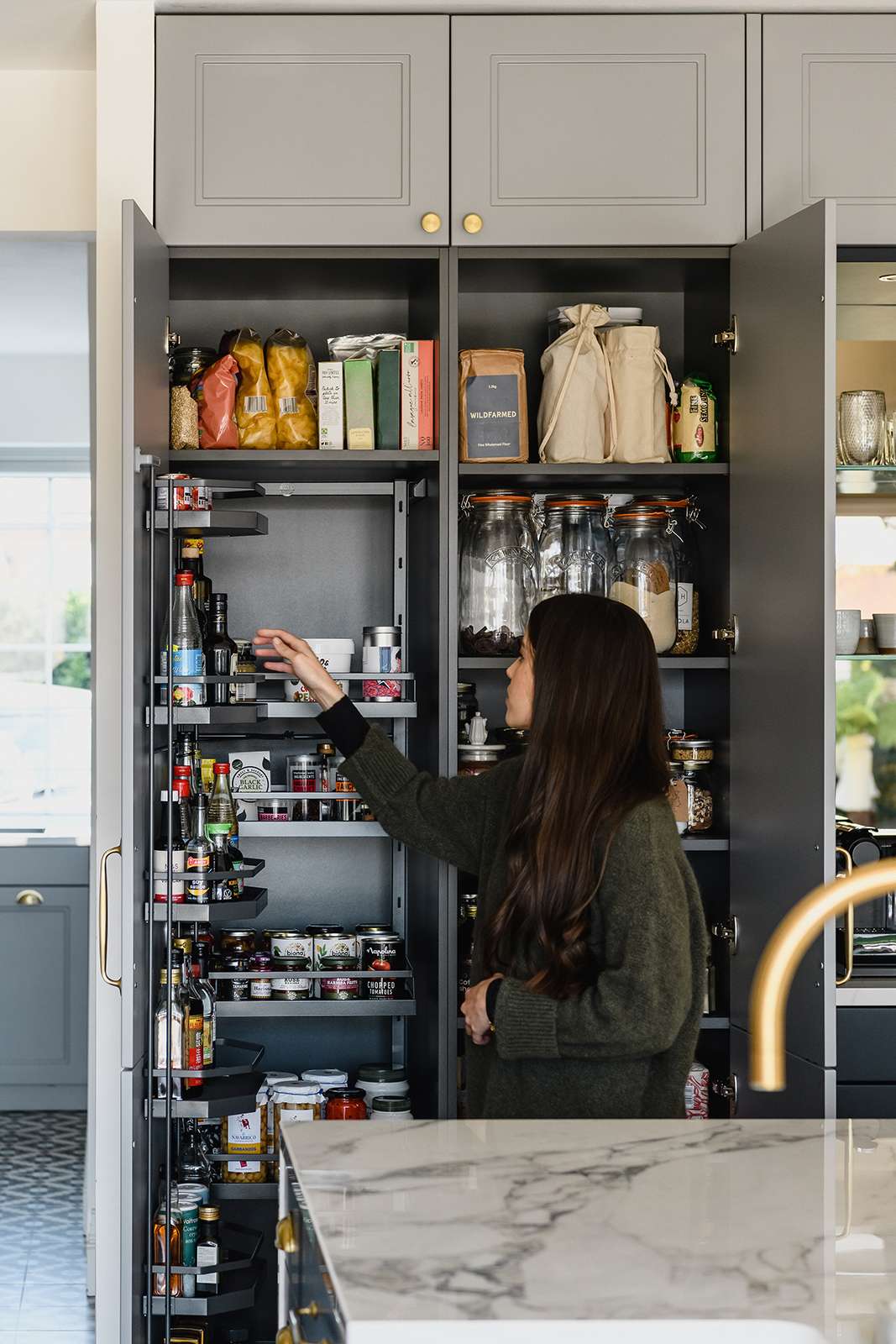
“My most cherished kitchen tool is my KitchenAid. I was gifted it for Christmas when I was 16 years old, which is when I first became interested in cooking. It’s pink – a reflection of how long ago I got it! It’s not the colour I would necessarily choose now.
“It was the first thing that my parents really invested in for me, which shows how much I cared about food. I later trained as a pastry chef, so baking with my KitchenAid was really my entry into that – that and a passion for sweet things. It’s been through a lot with me. I’ve used it to make my brother’s wedding cake, my friends’ birthday cakes, Christmas pudding, bread for the family and all kinds of things. I think it’s a nice symbolic utensil – and it’s much loved.
“The cookbooks I refer to most are Yotam Ottolenghi’s, which I always return to. I used Simple almost every day during lockdown, but if people are coming over I look to Jerusalem. Being Middle Eastern, I love cooking with flavours from the region and my family really enjoys them as well.
“I also love Georgina Hayden’s books Stirring Slowly and Taverna. She is Greek Cypriot, so her food has similar Mediterranean vibes – and her recipes are so good. They’re delicious, fairly easy and home-cook friendly. They’re certainly not too chef-y nor fussy. I often go to her for nice side salads.
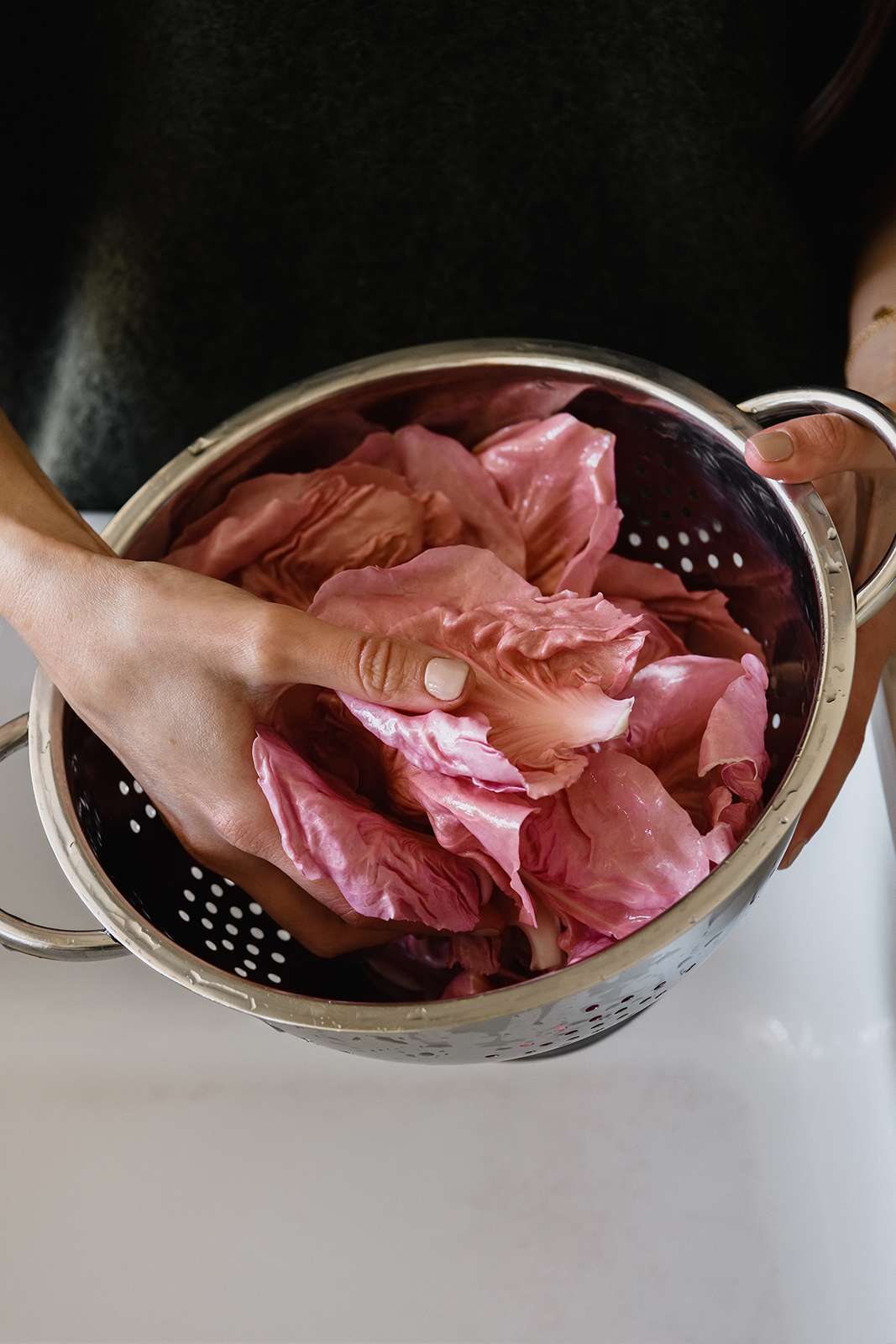
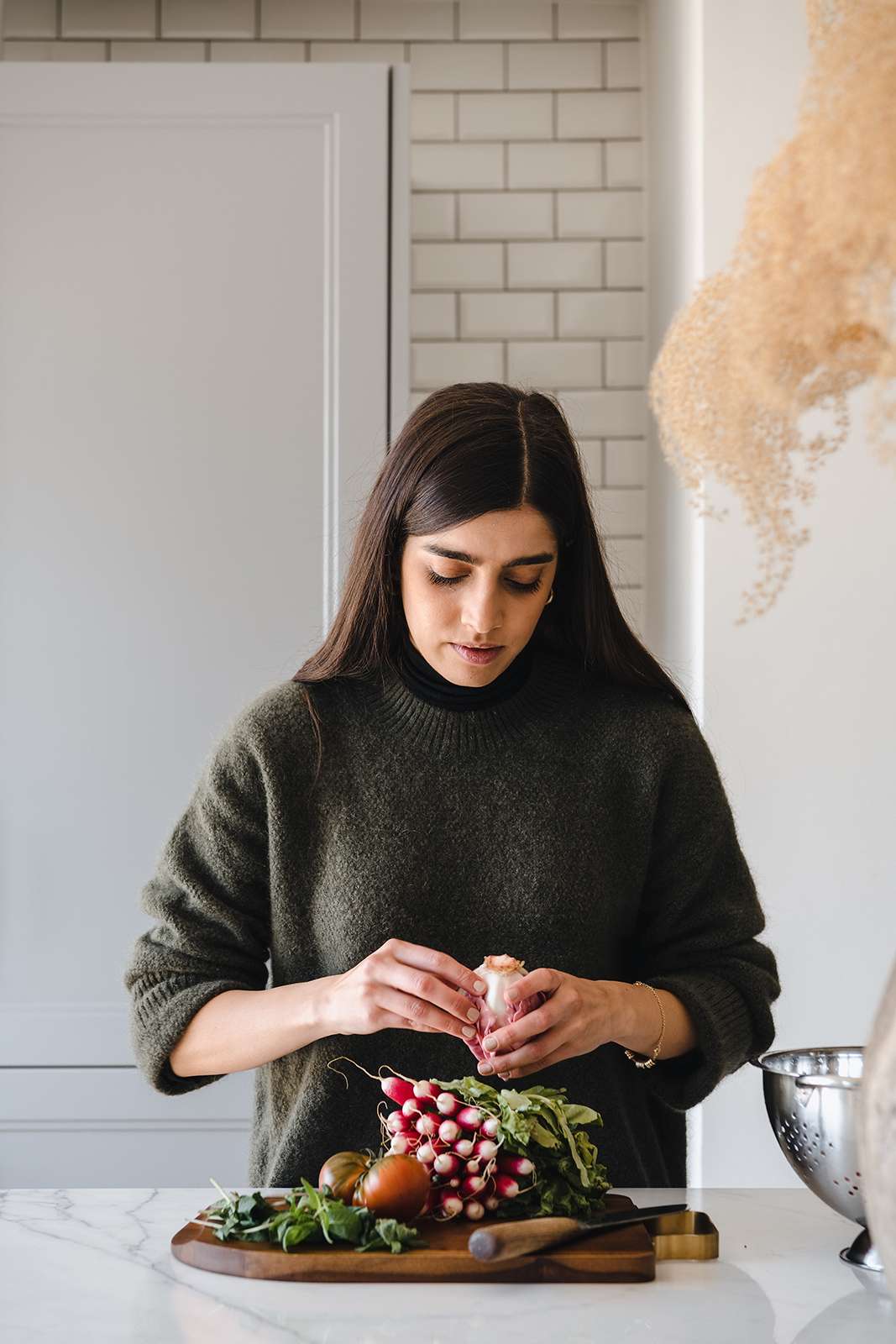
“My approach to home cooking is to feed a crowd – I have a big family! It’s all about trying to figure out a good way of nourishing as many bodies as possible in a way that is simple yet delicious. With that in mind, home cooking also means catering to everyone’s dietary requirements; my dad is gluten-free and my mum doesn’t eat red meat, so spag bol, my favourite thing in the world, is definitely unfortunately off the table.
“It’s also about making something comforting that I want to cook after a busy day. I really look forward to having a proper meal in the evening. If I don’t sit down at the table, I feel like something is missing from my routine. Home cooking is therefore about producing something is warm and nourishing, so that I end the day in the right way.
“In terms of ingredients, we only have one good greengrocer nearby, so we rely on him for fresh vegetables and produce for the week. There’s also a Turkish shop down the road, so we go there for all of our Middle Eastern ingredients, like pomegranate molasses and date paste. Good sourdough bread normally comes from central London, where we all find ourselves all the time anyway. And if I’m doing a shoot for Another Pantry, I’ll order home delivery from Natoora.”
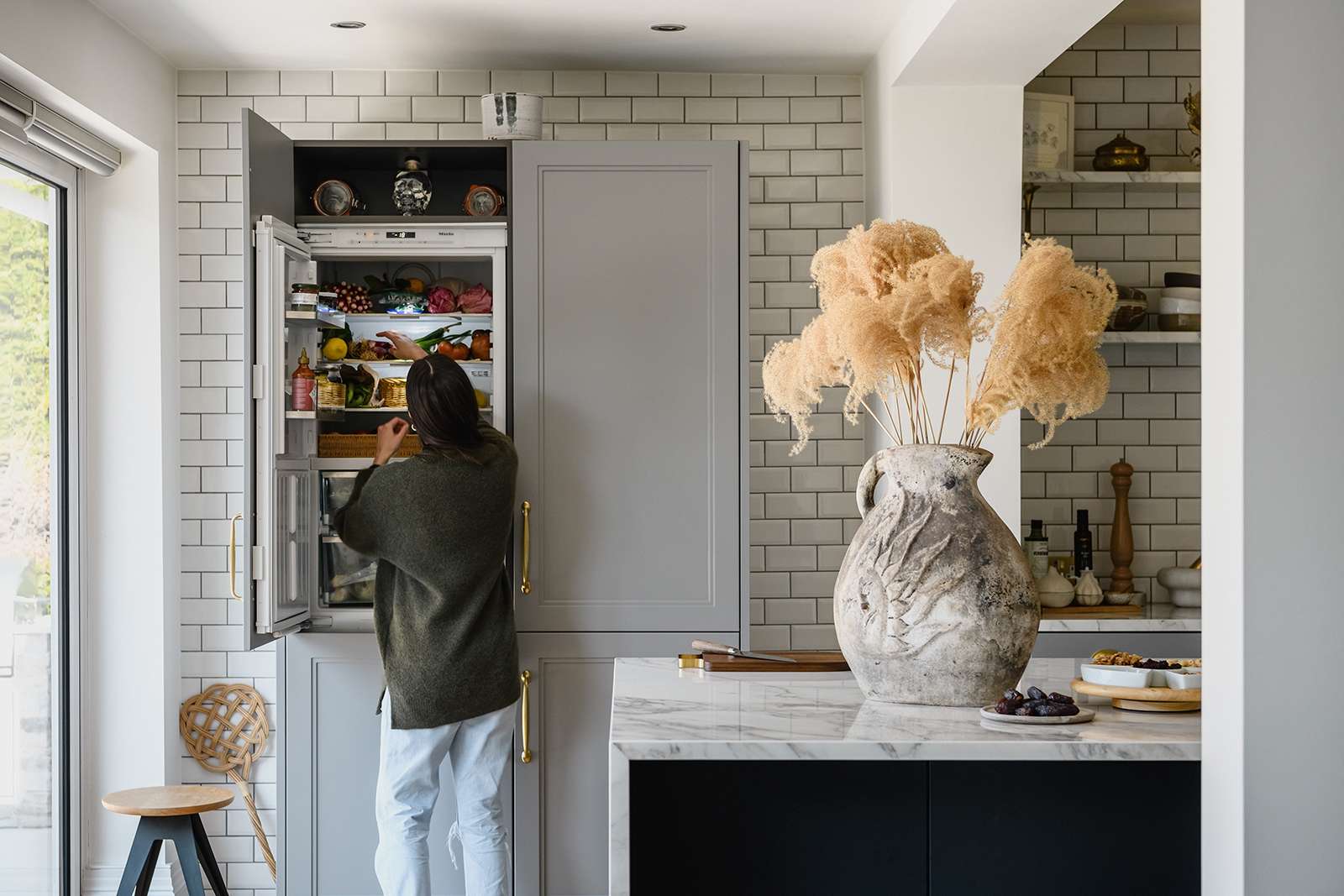
“At the weekend I like to take my time with cooking. Sundays have always been a family day – a tradition that was started by my late grandma and has been continued by my mother. Now it’s likely to involve my parents, my brother and his wife, and my boyfriend and me.
“Sunday always features big meal – perhaps a centrepiece with lots of sides, or a roast. Nigella Lawson’s one-pot chicken orzo is one of my favourites. It’s magic and melts in your mouth. I often play around with my own recipes, which are usually sweet; in particular, there’s a pistachio cake that I always make for my brother. In fact, he often calls before he comes home, to check that it’s in the oven!
“I have many favourite food memories, but a particularly special one is of the birthday I hosted here just before lockdown. It was the first gathering we’d had in the newly renovated kitchen. It was a cheese and wine night with my friends. The kitchen came alive; I have an image everyone gathering around the island and eating the food; it felt great to have such a wonderful space that we’d designed.
“The first time I ever cooked for my boyfriend was in this kitchen. He’s a real foodie and a big meat eater, so I made slow-cooked short ribs – I thought it might be the quickest way to his heart! I put this hunk of ribs in the oven for two hours and we had polenta on the side with mushrooms and salad. There was so much of the meat leftover that I made the rest into a ragù with pasta. We had a lot of ribs that weekend!”
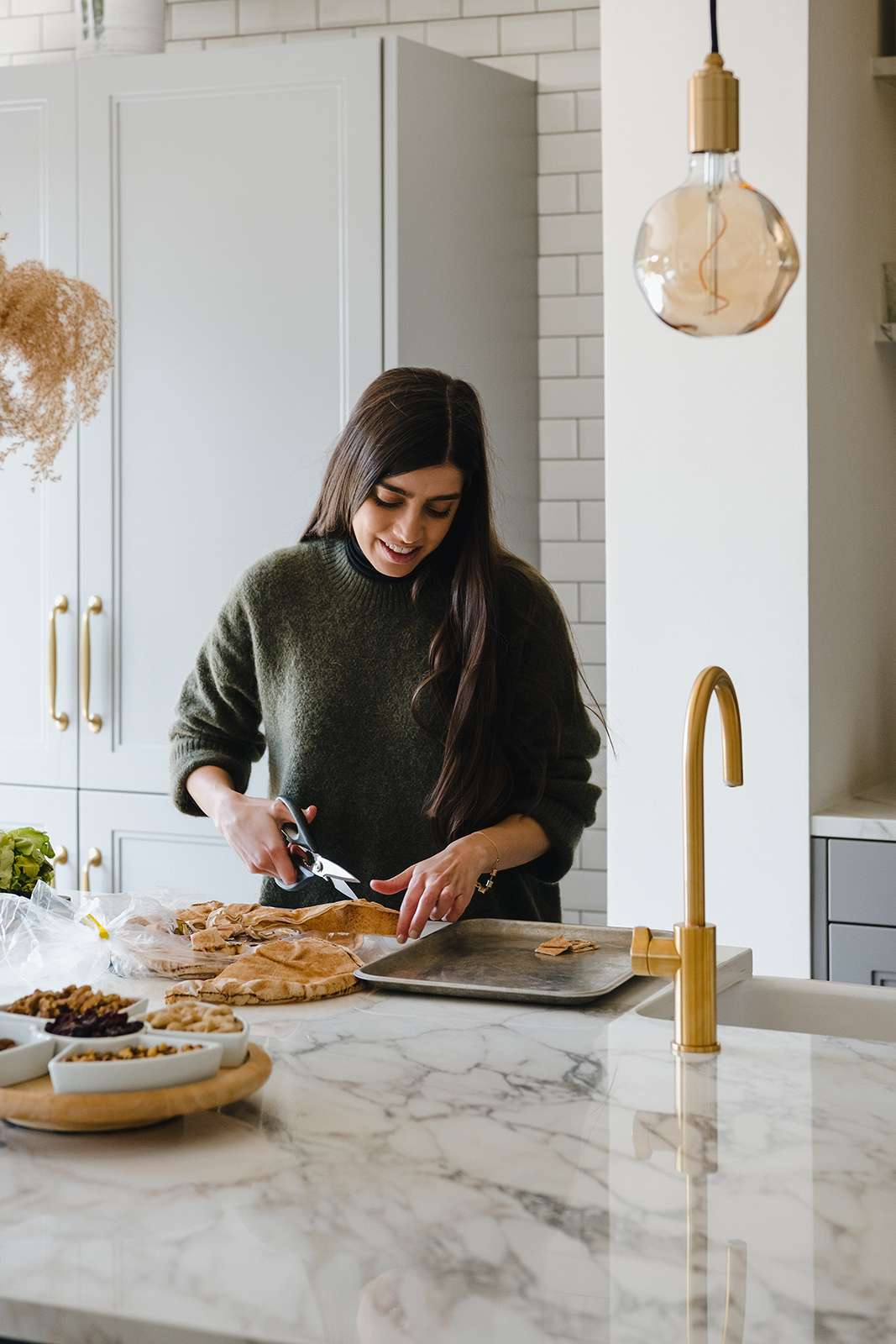
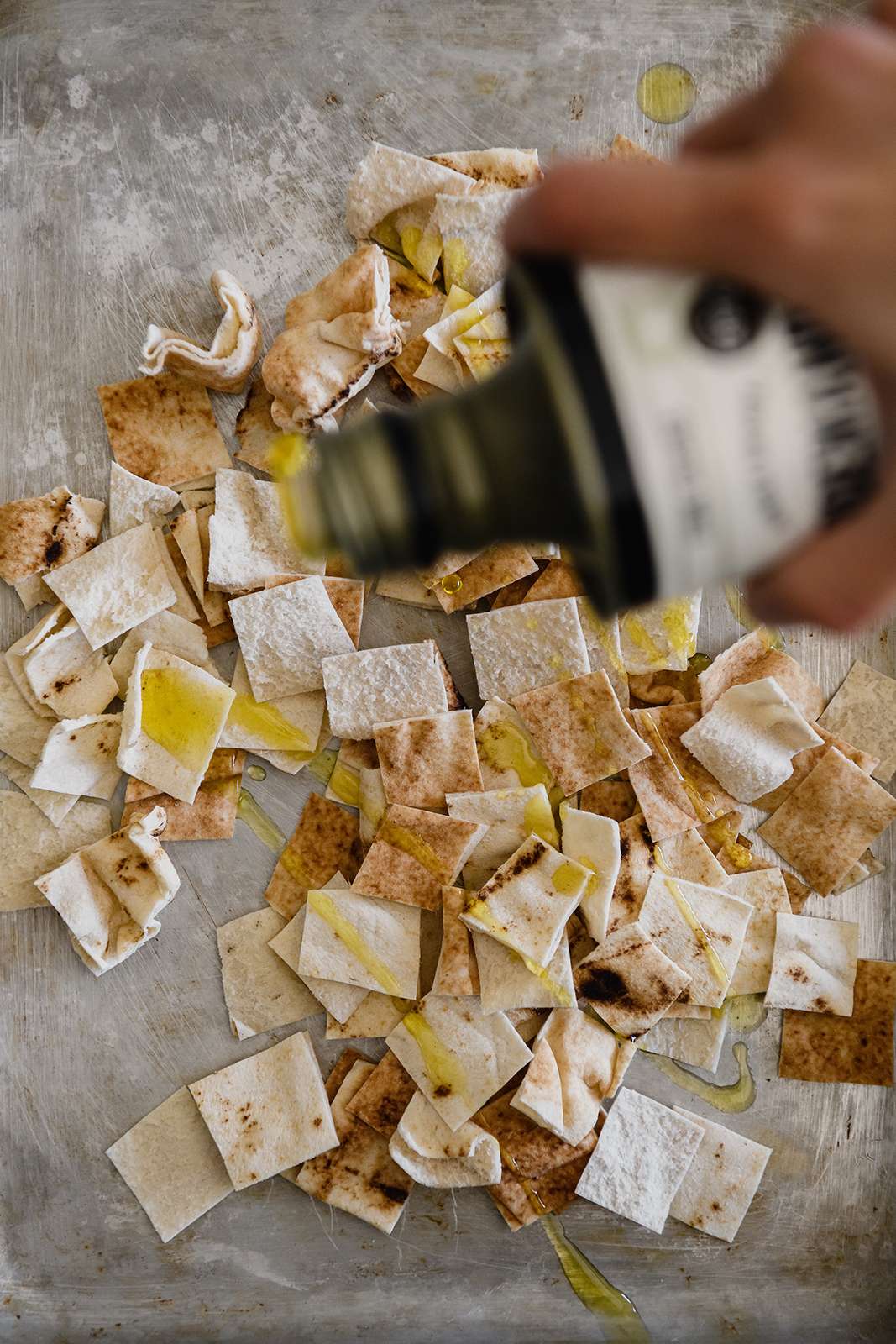
“Fattoush is a staple in our house and it’s the first thing we order when we’re out at a restaurant or on holiday in the Middle East. It’s a great representation of the incredibly fresh and bold flavours of Middle Eastern food — the mix of sumac and pomegranate molasses in the dressing is what makes it. It’s sweet, sour and herby all at once.
“I’ve made a version that uses the best of what’s in season as we move from winter into spring, but around this time of year all the traditional ingredients are coming in too: radishes, spring onions, cucumbers and mint. Enjoy this salad as part of a mezze spread or as a side or starter to any meal.”
Serves 4
For the fattoush
1 piece of Arabic bread (or substitute for a sourdough)
Olive oil
Salt
1 medium pink radicchio or other lettuce
100g baby spinach
6 radishes
2 tropea onions (or 4 spring onions)
2-3 baby cucumbers
2 large tomatoes
Handful mint
100g broad beans (podded weight, optional)
For the dressing
4tbsp olive oil
1tbsp pomegranate molasses
1tsp sumac
1tsp za’atar
1tsp dried mint
1tsp flaky sea salt
Juice of ½-1 lemon (to taste)
Preheat the oven to 200 degrees Celcius. Cut the bread into squares measuring roughly 3cm with a pair of scissors. Drizzle with a little olive oil and a pinch of salt and bake in the oven for 5-10 minutes or until nicely golden brown and crispy. Set aside to cool.
Meanwhile, wash and prepare the veg. Chop or tear the radicchio or lettuce you’re using and mix in a large bowl with the baby spinach. Thinly slice the radishes and onions, chop the cucumber into 1cm-thick rounds and cut the tomatoes into chunky wedges. Tear off the leaves of the fresh mint and add everything into the bowl.
If using broad beans, pop them in a pan of boiling water for 4 minutes, then drain and run under cold water before removing their skins. Add those in with the rest of the veg too.
In a separate small bowl, mix together all the ingredients for the dressing. Taste and adjust the seasoning – add a little more lemon juice or pomegranate molasses if you like it sour! Or, if it’s too sharp for you, add a bit more olive oil to soften it.
Toss the salad in the dressing so it’s all evenly coated. When you’re ready to serve, add the crunchy bread (make sure you add this last so it doesn’t go soggy).
Enjoy with lots of hummus.
